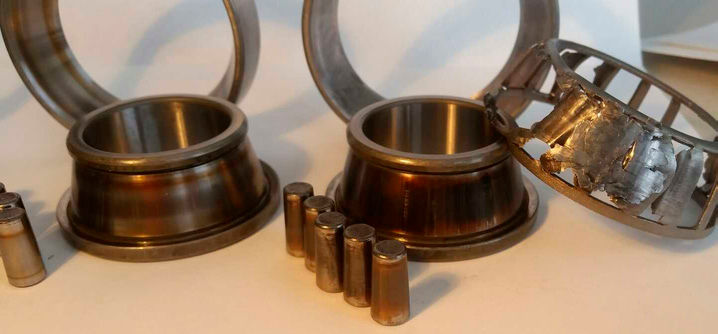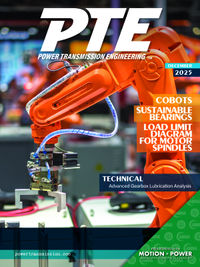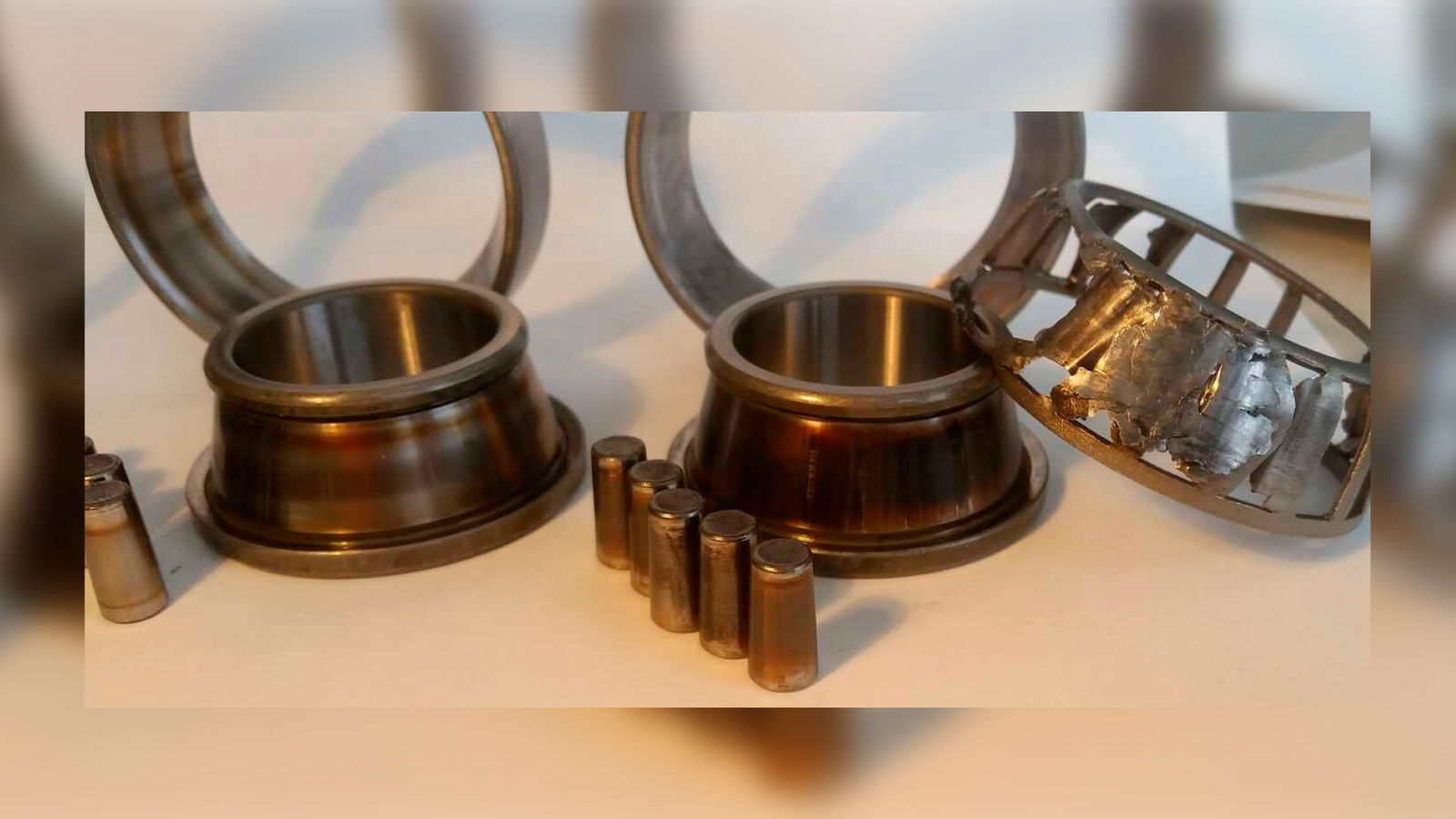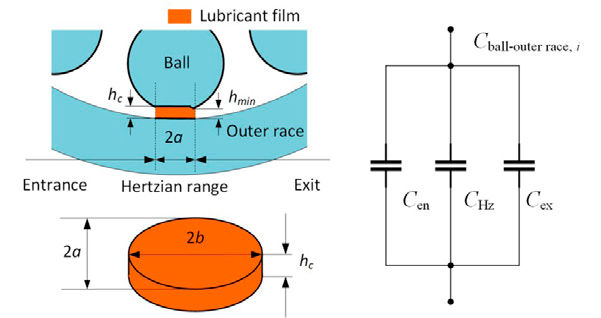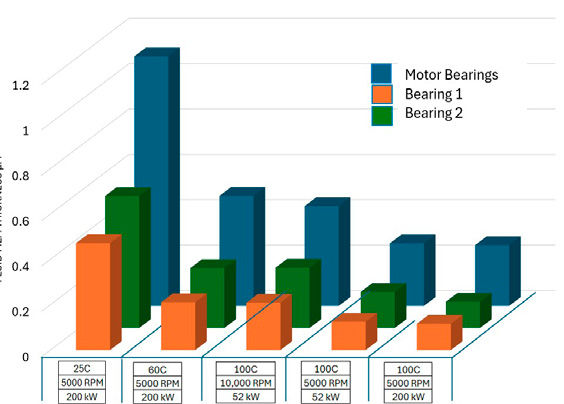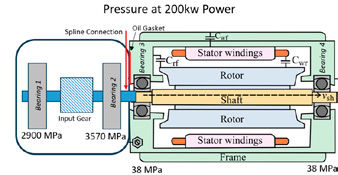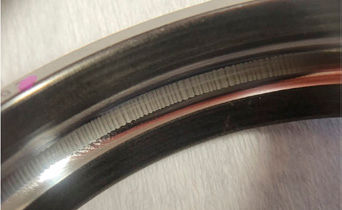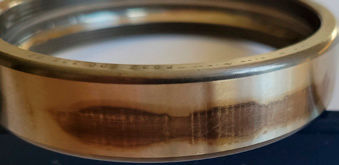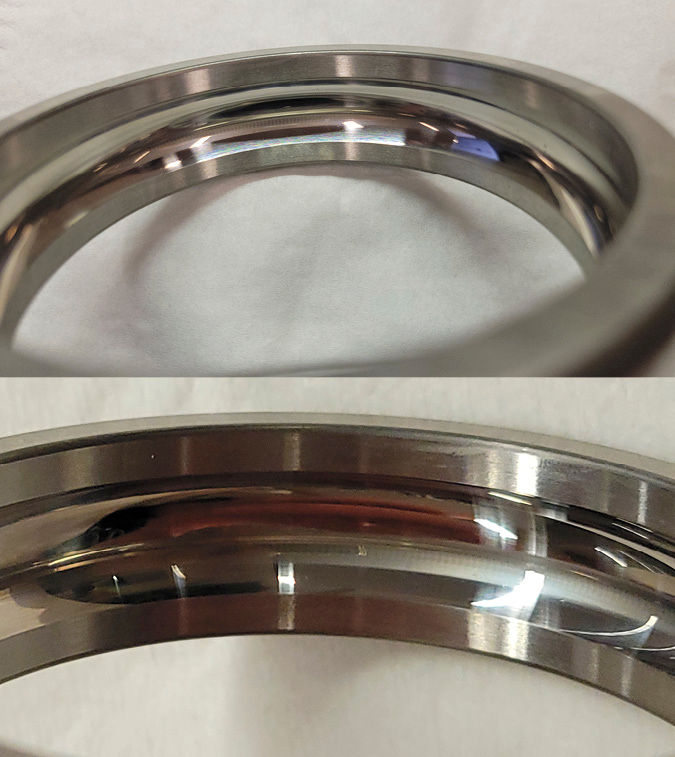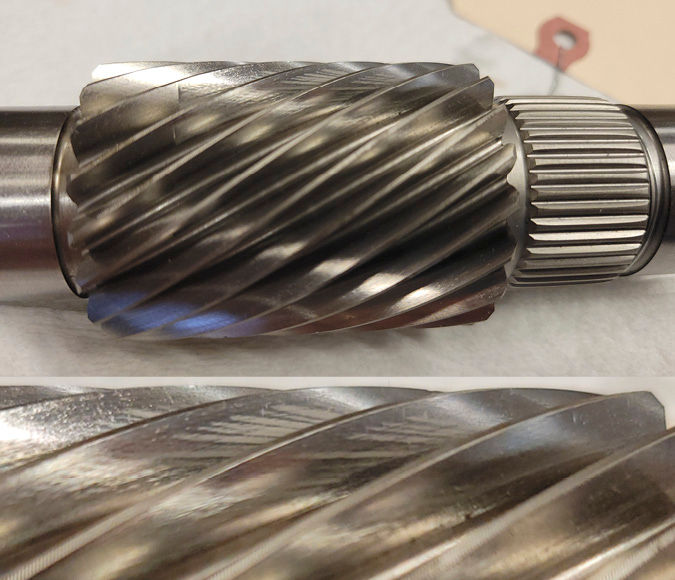The Path of Least Resistance—Roller Bearing Damage in VFDs
Bearing damage due to electric current in variable frequency drives (VFD) is well understood as a general concept. What is not yet fully developed are the models that better predict when a system is at risk and where we should be looking for early signs of damage.
Aegis (grounding rings) has, for years, provided great documentation outlining the need for an insulated / conductive pairing in VFDs due to various currents involved. In the chart below, shaft voltage discharge and high frequency circulating currents are typically what we are looking for.
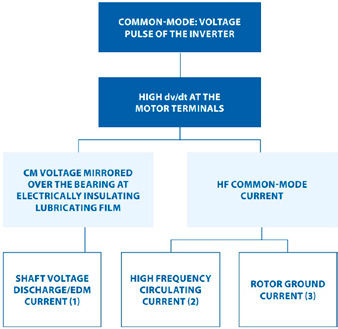
Rotor to ground current is often damage caused by an improperly grounded test cell.
The schematic below (Figure 2) provides a useful visual in understanding circulating current vs shaft voltage.
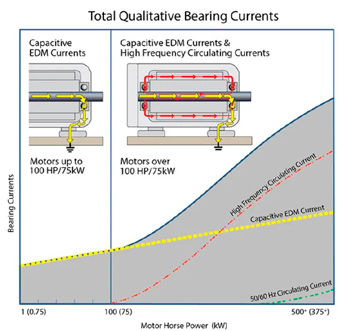
Adding the primary shaft of the gearbox to the image above and it becomes apparent that without mitigation, shaft voltage could be carried into the gearbox side bearings. It is less likely that circulating current would make it to the gearbox side as the path would need to include going through a gasket or bolts connecting the cover and housing.
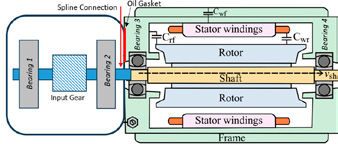
To understand where the current would likely travel with an unprotected system, we must understand the loading conditions. The primary protection for bearing current is the lubrication film in each bearing. The thicker the film, the higher the capacitance. Film thickness is determined by temperature, speed and load—and other minor contributors such as age of oil, surface finish and specific grades of steel. With a connected main shaft like this, our problem is greatly simplified because speed among the bearings is the same and we can assume temperature is similar—at least at the bearing race locations. Now we just need to understand loading conditions. Though various proposals for formulas exist, generally everyone agrees with some form of the relationship:

